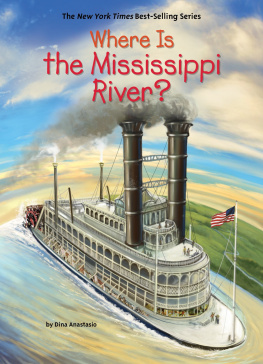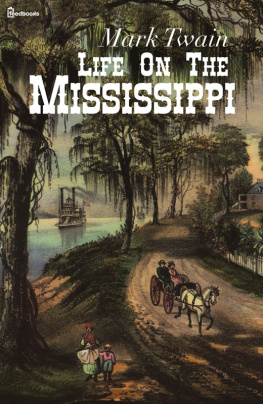
First published in 2009 by Voyageur Press, an imprint of MBI Publishing Company, 400 First Avenue North, Suite 300, Minneapolis, MN 55401 USA
Copyright 2009, 2010 by Kenny Salwey
PLC edition published in 2009. Digital edition 2010.
All rights reserved. With the exception of quoting brief passages for the purposes of review, no part of this publication may be reproduced without prior written permission from the Publisher.
The information in this book is true and complete to the best of our knowledge. All recommendations are made without any guarantee on the part of the author or Publisher, who also disclaims any liability incurred in connection with the use of this data or specific details.
We recognize, further, that some words, model names, and designations mentioned herein are the property of the trademark holder. We use them for identification purposes only. This is not an official publication.
Voyageur Press titles are also available at discounts in bulk quantity for industrial or sales-promotional use. For details write to Special Sales Manager at MBI Publishing Company, 400 First Avenue North, Suite 300, Minneapolis, MN 55401 USA.
To find out more about our books, visit us online at www.voyageurpress.com.
Digital edition: 978-1-61673-169-4
PLC edition: 978-0-7603-3497-3
Library of Congress Cataloging-in-Publication Data
Salwey, Kenny, 1943
The old-time river rats : tales of bygone days along the wild Mississippi / Kenny
Salwey.
p. cm.
ISBN 978-0-7603-3497-3 (plc)
1. Mississippi River ValleySocial life and customs. 2. Mississippi River
ValleySocial conditions. 3. River lifeMississippi River ValleyHistory. 4.
Country lifeMississippi River ValleyHistory. 5. City and town life
Mississippi River ValleyHistory. 6. Mississippi RiverHistory. I. Title.
F355.S25 2009
977.033092dc22
2009000594
Edited by Danielle Ibister
Designed by Barbara Drewlo
Cover designed by Elly Rochester
Printed in the United States of America
Cover, pages 1 and 10: Photos provided by La Crosse Magazine, published by Mueller Media, Inc., La Crosse, WI, Bruce Defries, Photographer
Page 2: Courtesy of Tom Kelley, U.S. Fish and Wildlife Service
Page 8: Courtesy of Mark J. Ness, Chicago
This book is dedicated to
TERRY JUDD, my brother-in-law and friend. Terry was a man who understood the pleasures of nature far better than most.
DAVEY KUNDA, my very first kid I took under my wing over forty years ago.
JIM FORSTER, a good friend and fellow believer in young folks and the need for them to experience nature.
SMOKEY JIM STOKES of the Dakota people, my longtime friend and mentor who married Mary Kay and me in a blanket ceremony.
All of these folks have passed over to the other side during the last year. Each of them loved and respected the natural world. They will be sorely missed and remembered for as long as the robin sings and the green grass grows with the coming of spring, by me and all their fellow travelers in the great Circle of Life.

CONTENTS

ACKNOWLEDGMENTS
M any thanks to Orlin and Kathy Brommer and to Dick and Ginny Brommerich for their help regarding the story of Ott and Ann found in this book.
I say thank you so very much to a pair of fine friends and excellent professional photographers whose photos appear in this book: Sandra Lines, who works out of Winona, Minnesota, and Mark J. Ness, based in Chicago, Illinois.
A special thank you goes to my editor, Danielle Ibister. Danielle has the amazing talent of being able to make sense of my handwritten scribblings. She is long on patience and short on criticism. What a pleasure to work with you, Danielle!
INTRODUCTION
I n the upper reaches of the Mississippi River Valley, high rugged hills stand guard like ancient watchmen on both sides of the Big River. To the west of the main river channel lies Minnesota; to the east, Wisconsin.
The hills bathe their feet in the river. Then they rise sharply to form deep ravines and steep sides studded with red, black, and white oak trees. Hickory, basswood, elm, popple, and white birch join their neighbors. Close to the ground grow many kinds of shrubs and saplings. In places, the tops of trees lie scattered about, leftovers from logging operations. Berry bushes grow thick as the hair on a dog. Prickly ash lies in wait to clutch at your clothes.
At times, the hillsides are so steep that one must hang on to the trees to keep from sliding into the deep ditches at the bottom of the ravine. It helps to follow game trails. Critters generally take the path of least resistance. However, to travel the hill country is still a far cry from a walk in the park.
In fact, there is a standing joke among hill folk. If you want to live in the hills, you need to be a side hill gouger. A side hill gouger is a person who has one leg shorter than the other; therefore, he can walk on a side hill on a fairly level plane as long as the short leg is on the uphill side. The problem is that he can only go around the hill in one direction. There aint no way of gettin back again.
The crowning glory of the hilltops are huge, craggy limestone and sandstone cliffs from which a person could tumble hundreds of feet into the wooded hillside below. I have often sat on these outcroppings and pretended I was a red-tailed hawk or an eagle soaring over the great river valley. The sounds of life find my ears: A train track and a highway on each side of the river. A towboat churning its way upstream. The far-off bark of a dog. The rap of a woodpecker in the woods.
The feel of the homeless hilltop winds is soft across my cheek, and the smell of the river bottoms and the woods below is drifting upon it. Across and up and down, I can see forever until the distant landscape becomes a blur of blue-gray shadows.
This is a place where thoughts run deep and dreams drift easily to and fro. I touch the timeless stones and wonder, how long have they been here? How long will they last? Who has touched them before or will again?
The very tops of the hills are much flatter. A gentle roll envelops the land. Here the earth has been cleared of trees and is tilled for crops. Small farmsteads dot the landscape. These open agricultural hilltops are called ridges. Some are a few hundred yards wide; others are several miles across. All are named: Canada Ridge, Belvidere Ridge, Alma Ridge, Grasshopper Ridge.
Once you cross a ridge, you again find yourself in dense woodland heading downhill. You also find yourself facing the same degrees of grade as on the other side of the hill: steep, steeper, and steepest.
Now we are finally at the bottom of the hill. The land here has been cleared and is not as rolling as the ridges, so the farms are larger. These places are called valleys and each one also has a name: Eagle Valley, Yeager Valley, Waumandee Valley, Daleys Valley, Rose Valley.
Next page









